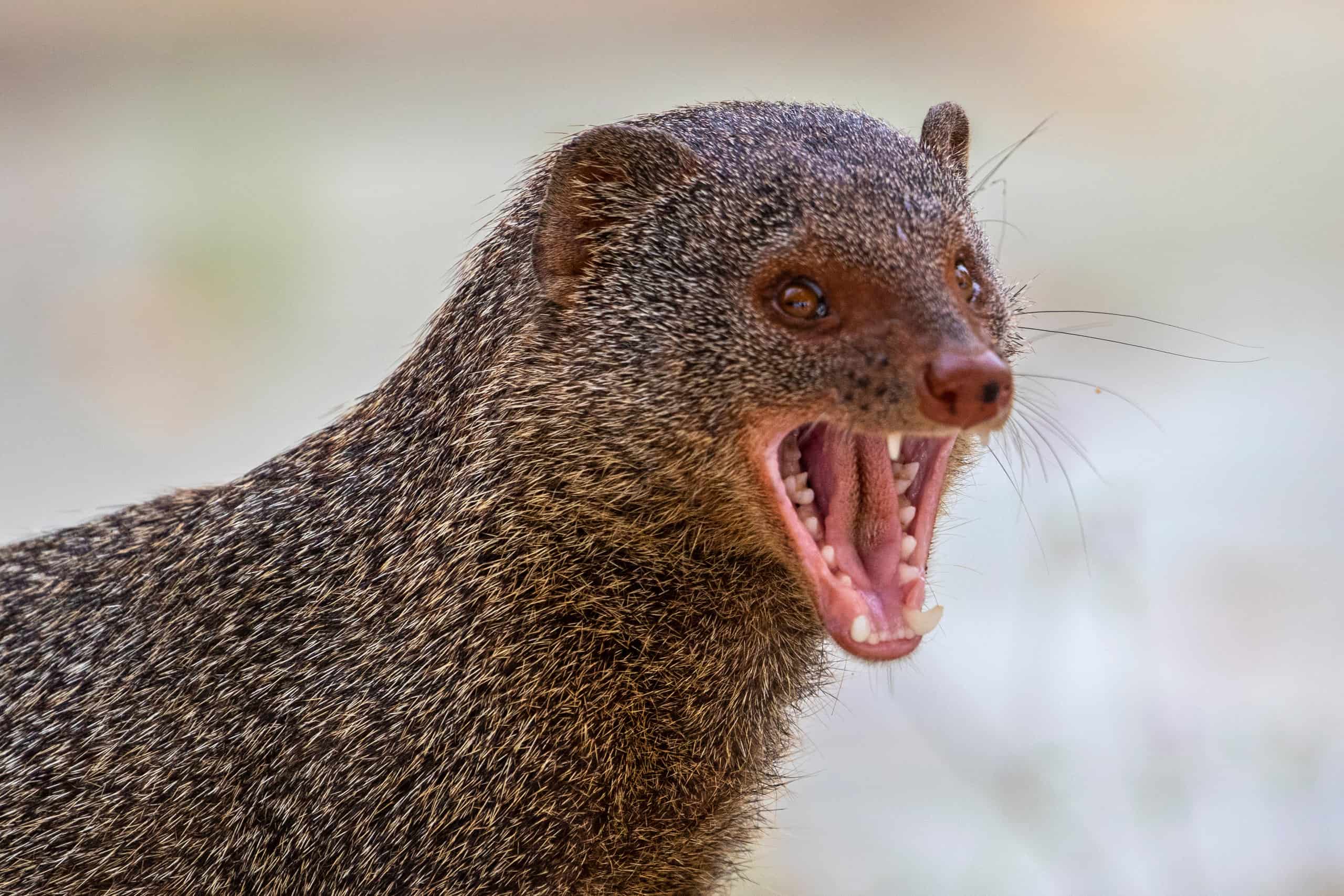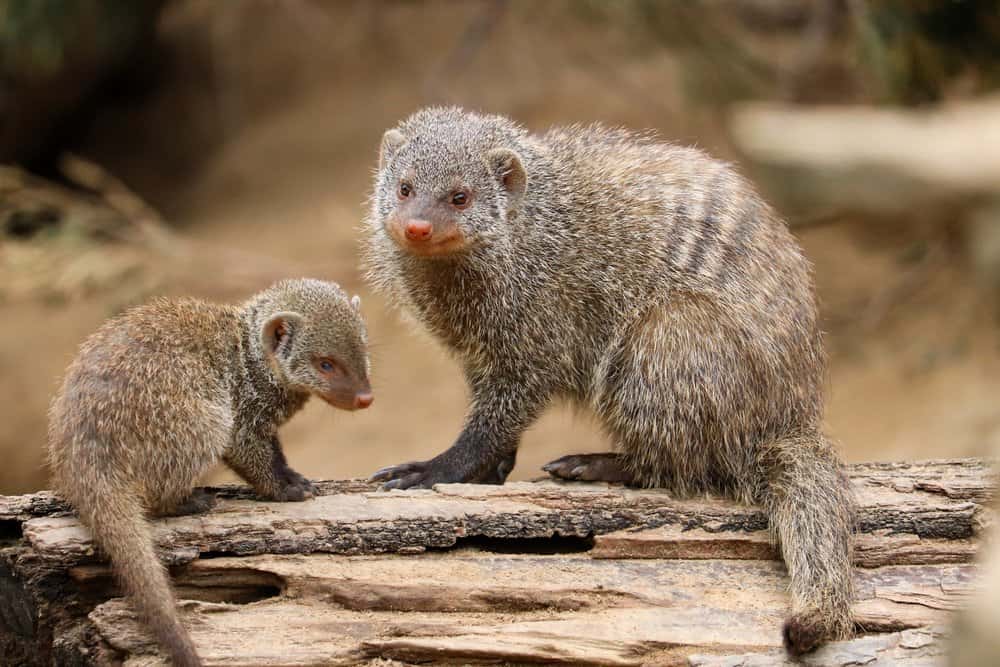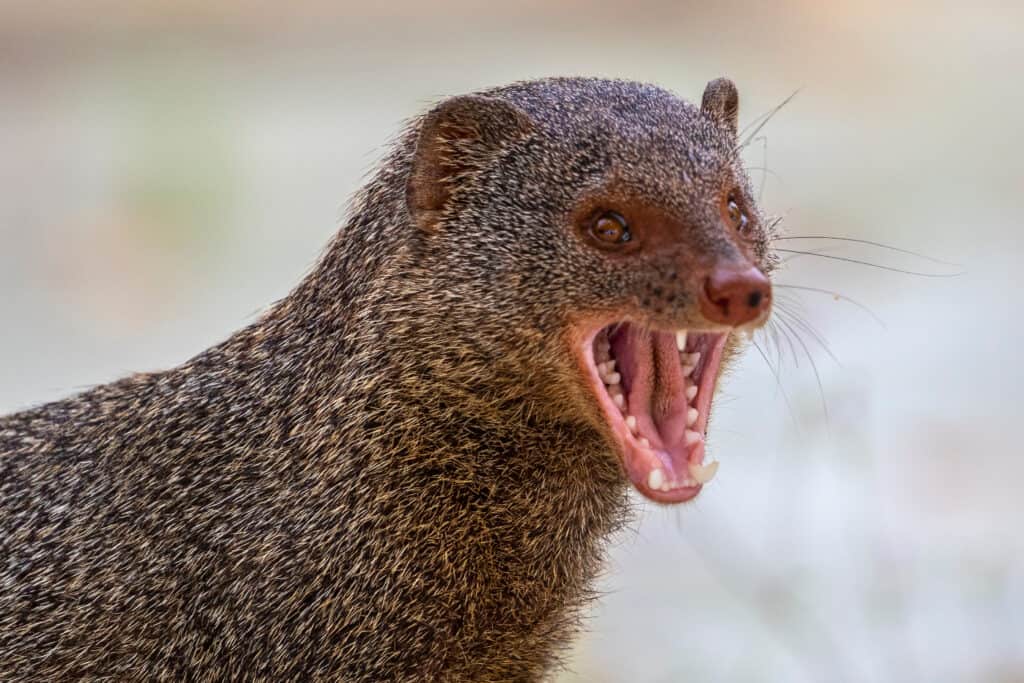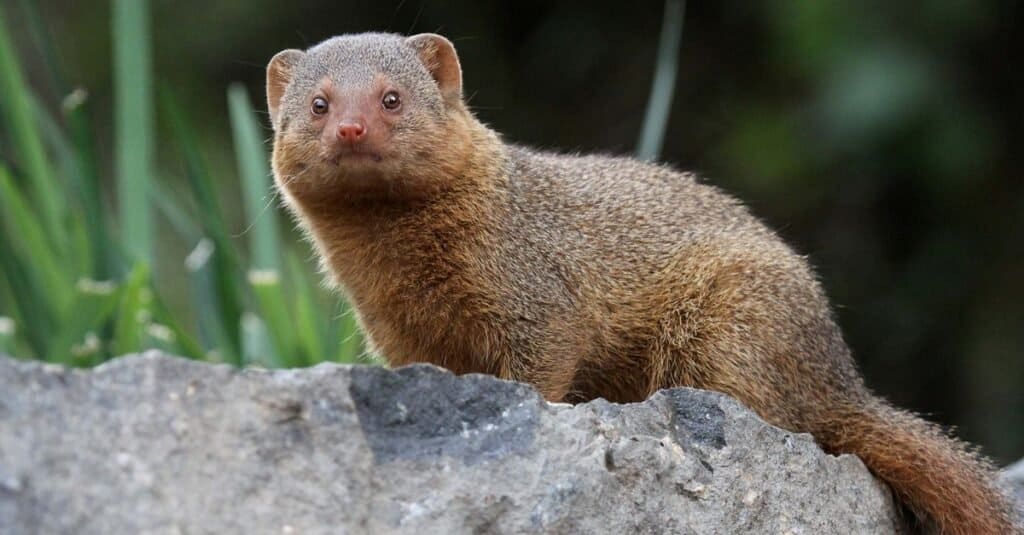Continue reading for our analysis...

The bravery of this little mongoose is astonishing. After all, who wants to get into a wrestling match with a cobra?
Click below to watch the full clip of this remarkable encounter.
What Are Mongooses?

There is no single species of mongoose
©Eugene Troskie/Shutterstock.com
There is actually no single species of mongoose. Instead, it is a commonly used term that describes a group of species.
However, they are all in the Herpestidae family and this name is based on the Greek word to describe animals that walk or creep on all four feet. There are around 34 mongoose species alive today including the Indian grey mongoose and the Egyptian mongoose.
In terms of animal relations, they are in the Carnivora order which they share with cats and dogs. However, they are more closely related to viverrids such as civets, genets, and linsangs.
Mongooses can be anything from one foot to three feet in length with a sleek and elongated body, short legs, and thin snouts. They look so like a weasel that these two animals are sometimes confused.
How Large Do Mongooses Get?

The mongoose’s body length, excluding the tail, can range from 9.4 to 22.8 inches.
©Cassidy Te/Shutterstock.com
The mongoose’s head-to-body length, not counting the tail, varies from 9.4 to 22.8 inches. Their weight can be anywhere from 11 ounces to 11 pounds, with lengths ranging from 9.4 inches to 22.8 inches. Mongooses belong to a group of at least four mammal categories that possess genetic mutations in the nicotinic acetylcholine receptor, providing protection against snake venom.
Interesting Facts About Mongooses

The most remarkable characteristic of mongooses is their willingness to tackle venomous snakes.
©Rajeev Amaratunga/Shutterstock.com
It’s quite surprising that such a small animal is quite well known and has a long-standing relationship with humans who are fascinated by them.
Our relationship with mongooses can be traced back at least to Egyptian times when they were common pets. Their mummified remains have been found in Egyptian tombs. They have also been immortalized in literature and an Indian grey mongoose called Rikki-Tikki-Tavi appears in the famous children’s book The Jungle Book by Rudyard Kipling.
Probably the most remarkable characteristic of mongooses is their willingness to tackle venomous snakes as we see in this clip. There are a number of reasons for this. Mongooses are quick and agile and basically keep leaping around! This makes it very hard for a snake to aim an accurate strike. Also, they have tough skin and thick hair making it harder for the snake to penetrate their skin.
However, the most impressive feature of all is their partial immunity to snake venom. This is because their acetylcholine receptors are slightly mutated making it hard for the venom to bind to them and exert its toxic effect. This leaves the cobra very confused and in a lot of trouble!
Is it Normal For A Mongoose to Eat Cobras?

Mongooses are noted for their audacious attacks on highly venomous snakes, such as king cobras.
©steve bushman/Shutterstock.com
The mongoose is an active predator and scavenger, with a diverse diet that includes various small prey. It holds a special affinity for snakes, and while all mongoose species consume snakes regularly, the slender mongoose and grey mongoose stand out as the two most inclined to engage with and consume King cobras.
The mongoose possesses the ability to endure the deadly bite of venomous snakes, prevailing in 75 to 80 percent of encounters with cobras. Notably, the Indian grey mongoose is renowned for its inclination to engage in combat with and consume venomous snakes such as cobras.
Thank you for reading! Have some feedback for us? Contact the AZ Animals editorial team.







